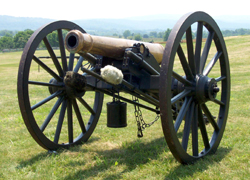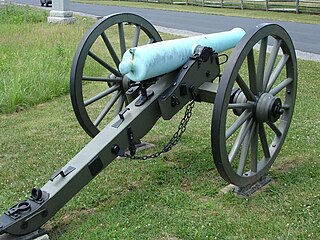| "Canon de l’Empereur" Canon obusier de campagne de 12 12-pounder "Napoleon" | |
|---|---|
 Canon obusier de campagne de 12 modèle 1853 on display in Les Invalides. | |
| Type | Regimental artillery field gun |
| Place of origin | France |
| Service history | |
| Used by | France, United States, Confederate States of America |
| Wars | Crimean War, American Civil War |
| Production history | |
| Designed | 1853 |
| No. built | France: ? United States: Union States: 1,100, Confederate states: 600 |
| Specifications | |
| Mass | 626 kg (1,227 lb), with carriage: 1,200 kg (2,353 lb) |
| Length | 1.91 m (66 in) |
| Crew | 4 |
| Shell | 4.1 kg shell, ball, canister |
| Caliber | 121 mm (4.62 in) |
| Muzzle velocity | 439 m/s (1,440 ft/s) |
| Effective firing range | 1,480 m at 5° elevation (1,440 yd) |
The Canon obusier de 12 (officially the "Canon obusier de campagne de 12 livres, modèle 1853"), also known as the "Canon de l’Empereur" ("emperor's cannon"), was a type of canon-obusier (literally "shell-gun cannon", "gun-howitzer") developed by France in 1853. Its performance and versatility (it was able to fire either ball, shell, canister or grapeshot) allowed it to replace all the previous field guns, especially the Canon de 8 and the Canon de 12 as well as the two howitzers of the Valée system.
Contents
The cannon was known in the United States as the 12-pounder Napoleon after French President and Emperor Napoleon III.





















